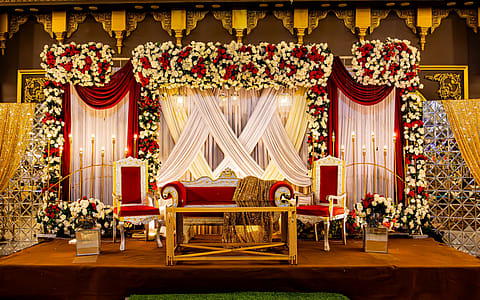With rising venue, food and décor prices, a modern wedding can easily cross ₹30 lakh, says Finnovate's Nehal Mota
Engage children in the planning to foster financial awareness, helping them grasp the cost components such as venue, food, and décor, and emphasise the importance of not overspending beyond their means

The cost of weddings has varied over time, as today's elaborate revelries contrast with the traditions and financial constraints of yesteryear. Nehal Mota, Co-founder and CEO, Finnovate, in an exclusive interview with Fortune India, highlights change in expectations, lifestyle, and financial factors that affect how much couples can spend on their big day. This means that, with both variables taken into account, the so-called ideal wedding is becoming more ornate and expensive in these modern times.
Edited Excerpts:
Q. How much have wedding expenses increased over the years?
Nehal: Over the last couple of years, wedding costs in India have increased considerably. According to a report in 2024, the average wedding spend increased by 14% year on year to approximately ₹32-35 lakhs from about ₹28 lakh in 2023. On the venue front alone, one survey found the average cost of venues jumped to around ₹6 lakh, up from about ₹4.7 lakh the previous year. For luxury or destination events, the figures can climb even higher-some multi-day, destination weddings are estimated at ₹1.2–1.5 crore.
Q. What are the major factors driving up wedding costs in recent times?
Nehal: Wedding costs have increased due to large guest lists, high-priced venues, elaborate décor, and unique experiences. Social trends and inflation compound all these factors. Additions in the way of food and catering, and technology-based, also add significantly to the overall budget.
Several key factors contribute to the rise.
Recommended Stories
Venue and scale: As with more guests and premium locations, costs go up. One breakdown shows that accommodation and food together take up about 40% of the destination wedding budget.
Technology and experience: Couples are investing in high-end décor, live streaming, and drone photography, adding to vendor costs.
Food and catering: Food costs are a leading driver; menus are expanding, and per-plate costs are rising. Industry data indicates dinner costs for large weddings might range widely, but are significant.
Social expectations and trends: The desire for "Instagram worthy" ceremonies, multi-day events, and destination weddings means larger budgets.
Inflation and Input Costs: Venues, décor materials, labour, logistics-everything has become more expensive, feeding into the overall spend.
Q. How can early financial planning help families manage these rising expenses?
Nehal: Families can treat a wedding as a long-term objective rather than a last-minute expense when they plan ahead. The incentive to borrow or take on high-interest debt is reduced by setting a target spend (for example, budgeting for an event costing ₹30 lakh) and gradually saving. Small monthly donations add up if you start saving well ahead, as opposed to having to raise tens of lakhs all at once. It also makes it possible to prioritise the most important things, such as selecting the location, size, or décor appropriately, and to make deliberate trade-offs rather than under pressure.
Q. Should parents start a “wedding fund” for their children early on?
Nehal: Yes, it definitely makes sense to create a specific “wedding fund” as early as possible. Given today's average costs-₹30 plus lakh for most weddings, a head start of 7 -10 years with regular investment will make a substantial difference. It helps avoid last-minute loans or debt and ensures the wedding does not come at the expense of other goals, such as education, retirement, or owning a house. Secondly, involving the child in the planning process instils financial awareness - helping him/her understand the cost structure that comprises venue, food, décor, amongst others, and the discipline of not overspending beyond one's means.